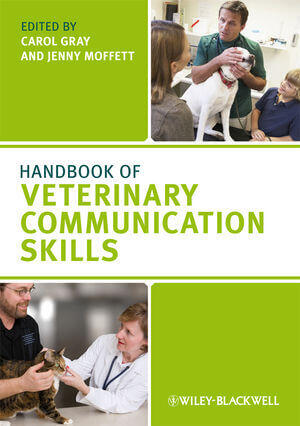
By Carol Gray and Jenny Moffett
Handbook of Veterinary Communication Skills PDF is written specifically for students and veterinary professionals by a group of international experts. Communication is a core clinical skill, and is now taught as a compulsory part of most veterinary degree courses. Good communication is crucial to the veterinarian-client-patient relationship, to patient health and ultimately to the success of any veterinary business.The book covers all the key areas of communication including: the basic framework for the veterinary consultation; professional, ethical and legal aspects; communication with clients and colleagues; and coping with end-of-life and other difficult situations. It combines the most up-to-date research with a wealth of practical information, such as:
- Real-life case studies to help you apply your learning to real scenarios
- Simple step-by-step guidelines showing you how to deal with specific situations
- Examples of written resources you can use in practice
This valuable textbook has been written and edited by a carefully chosen group of specialists, comprising veterinary communication lecturers, veterinary practitioners, training managers and counsellors.
| File Size | 4.89 MB |
| File Format | |
| Download link | Free Download | Become a Premium, Lifetime Deal |
| Updates & Support | Join Telegram Channel To Get New Updates | Broken Link |
| Become a Premium |  |
| More Books: | Browse All Categories |













![Ettinger’s Textbook of Veterinary Internal Medicine 9th Edition [PDF+Videos] Ettinger’s Textbook of Veterinary Internal Medicine 9th Edition [True PDF+Videos]](https://www.vet-ebooks.com/wp-content/uploads/2024/10/ettingers-textbook-of-veterinary-internal-medicine-9th-edition-100x70.jpg)

![Textbook of Veterinary Diagnostic Radiology 8th Edition [PDF+Videos+Quizzes] Thrall’s Textbook of Veterinary Diagnostic Radiology, 8th edition PDF](https://www.vet-ebooks.com/wp-content/uploads/2019/09/textbook-of-veterinary-diagnostic-radiology-8th-edition-100x70.jpg)






